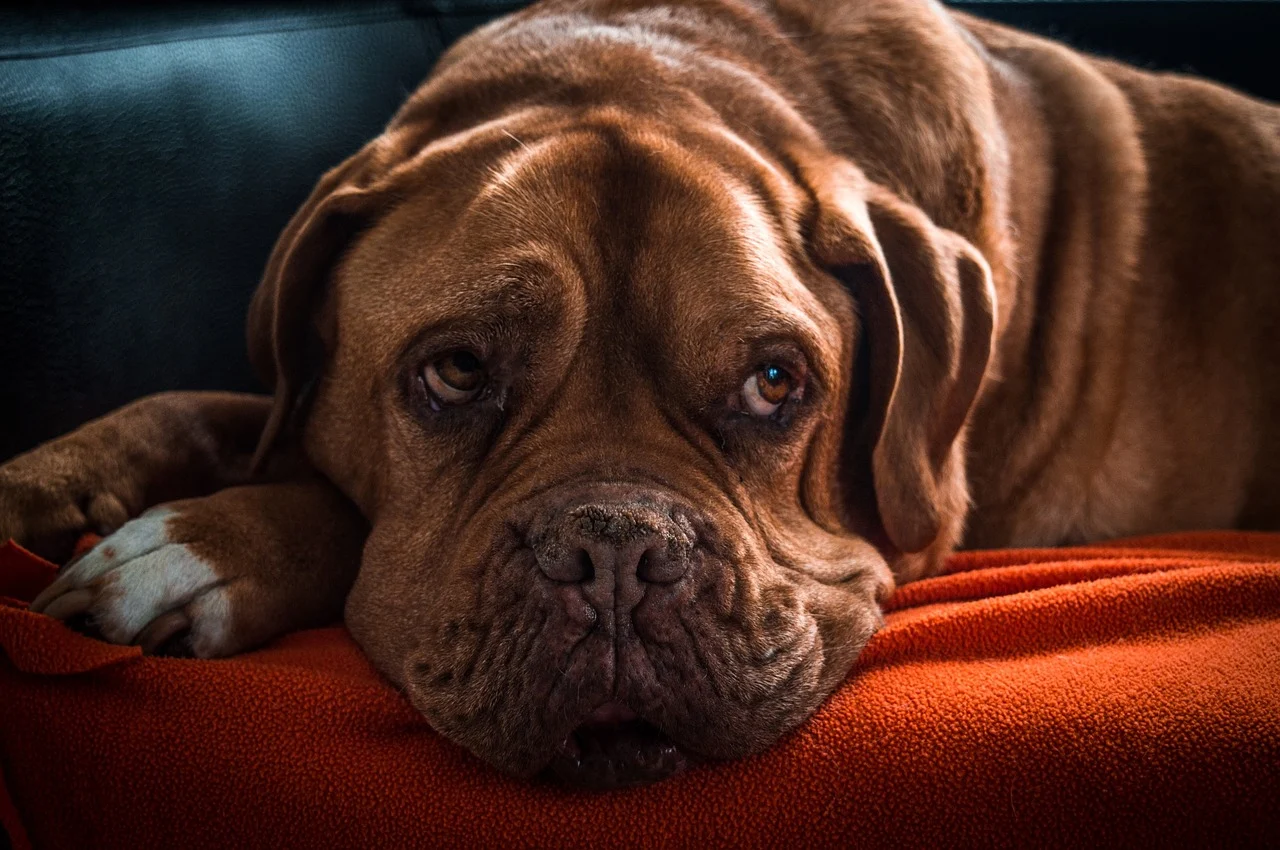Is your dog in pain, is experiencing lameness, or has a hunched back? Chances are they are suffering from Intervertebral disc disease. This condition isn’t only affecting humans, IVDD in dogs is a very common health problem.
All dog breeds can get it, but there are certain breeds that are more susceptible to this health condition. In fact, smaller breeds are more often affected than larger ones because of the way their bodies are built.
This health condition is generally age-related. But it can also occur due to mechanical forces acting on your dog’s spine. With this condition, it’s important to diagnose it in time. A delayed diagnosis can cause your dog to suffer and be in constant pain.
In this article, we’ll talk more about IVDD in dogs and which treatment options are available. But we’ll also talk about how you can help your dog, and everything else you need to know.
While you’re here, read more about other common health problems in dogs:
- Dogs that ate bees: What to do if it happens to you?
- Dog Panting At Night: Possible Causes
- Orange dog poop: What does it mean?
- Dogs With Short Spine Syndrome
- Corneal Ulcer Dog: What Is It?
- Dog Choking: What To Do?
Intervertebral Disc Disease or IVDD in dogs
What exactly is Intervertebral Disc Disease? To answer this, let’s first explain how your dog’s spine is formed.
A dog’s spine consists of seven cervical, thirteen thoracic, seven lumbar, three sacrum, and ten to twenty-three caudal vertebrae. They are all bony and if they were to form the spine on their own, they would be a very rigid structure that wears out quickly. That is why there are intervertebral discs in each of these spaces. Basically, they are a buffer.
It literally ensures your dog has “smooth” and elastic movements and prevents abrasion of the individual vertebrae. So, if there are pathological changes to the intervertebral discs, if they get damaged, they can’t protect our dog’s spine. One of the possible consequences of this is Intervertebral Disc Disease or IVDD in dogs.
Now, you should also know that an intervertebral disc consists of three parts: the nucleus, the outer ring, and the transition zone between the two. The core consists of gelatinous tissue (which is 80 to 85% made out of water), while thick, white fiber bundles and collagen-producing cells form the ring. In the beginning, IVDD will only present itself as a macroscopic change in the tissue.
But as time goes by, and the condition is left untreated, the shock-absorbing discs between your dog’s vertebrae begin to harden until they aren’t able to cushion the vertebrae normally.
Causes
Besides simply being an age-related, degenerative process, it also has to do with your dog’s size and its breed.
So, firstly while your dog is moving and living its best life the discs in its back lose their flexibility, making them more susceptible to injury. Secondly, severe injury is another cause of intervertebral disc disease in dogs. This means that any dog can get affected by this condition.
But, there are breeds that are more susceptible to it than others.
Dogs that are smaller and closer to the ground, as well as dogs whose backs don’t fit the “natural” shape, are at high risk of this disease. So, the dog breeds that are most commonly affected are:
- Basset Hound
- Beagle
- Dachshund
- Doberman Pinscher
- French Bulldog
- Labrador Retriever
- Pekinese
- Poodle
- German Shepherd Dog
- Shar-Pei
- Shih Tzu
- Cocker Spaniel
- Welsh Corgi
But, how do you know there’s something wrong with your pup? What are the first signs of IVDD in dogs? Well, there are a couple of signs of IVDD in dogs, which include:
- your dog is holding its neck low
- they are unable to fully lifte their head
- neck or back pain
- weak, uncoordinated movement
- limping on one or both front limbs
- urinary incontinence
- panting or shivering
- paralysis in four limbs
- difficulty breathing
Treatment
IVDD in dogs is a health condition that needs to be taken very seriously. It absolutely requires to be treated. But, we also have to say that the treatment depends on the symptoms and how far along the condition is.
Medication
In the case of herniated discs that are not associated with paralysis, certain medicament might be enough as a treatment. In addition to painkillers, anti-inflammatory drugs, and muscle relaxants, you will also have to keep your dog calm for a couple of weeks. So no playtime or any other kind of excessive activity.
Surgery
Surgery is particularly necessary if your dog does not respond to medicament or shows signs of paralysis. If your vet decided on surgery, your dog’s spine will be milled and the damaged intervertebral disc will be removed.
Physical therapy
Physiotherapy is essential to relieving existing symptoms, strengthening your dog’s back, and preventing further herniated discs. So no matter how far along the condition is, this kind of therapy might be a good idea. But, always contact a certified animal physiotherapist. That’s very important because the exercises have to be precisely adapted to the individual clinical picture, otherwise, there will be no improvement, and it could even worsen your dog’s condition. Physiotherapy includes massages and passive movements, but also active movements, for example on an underwater treadmill.

